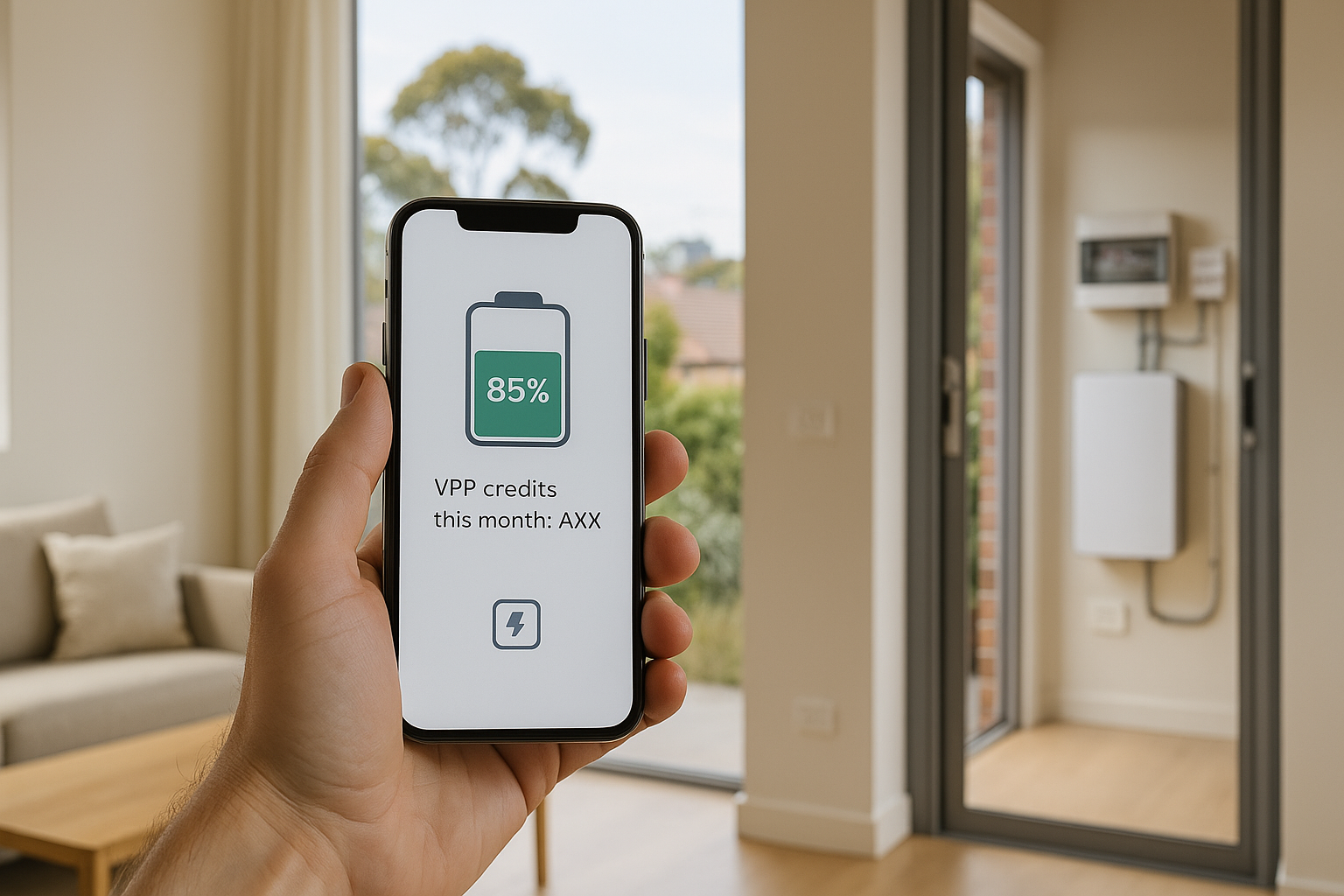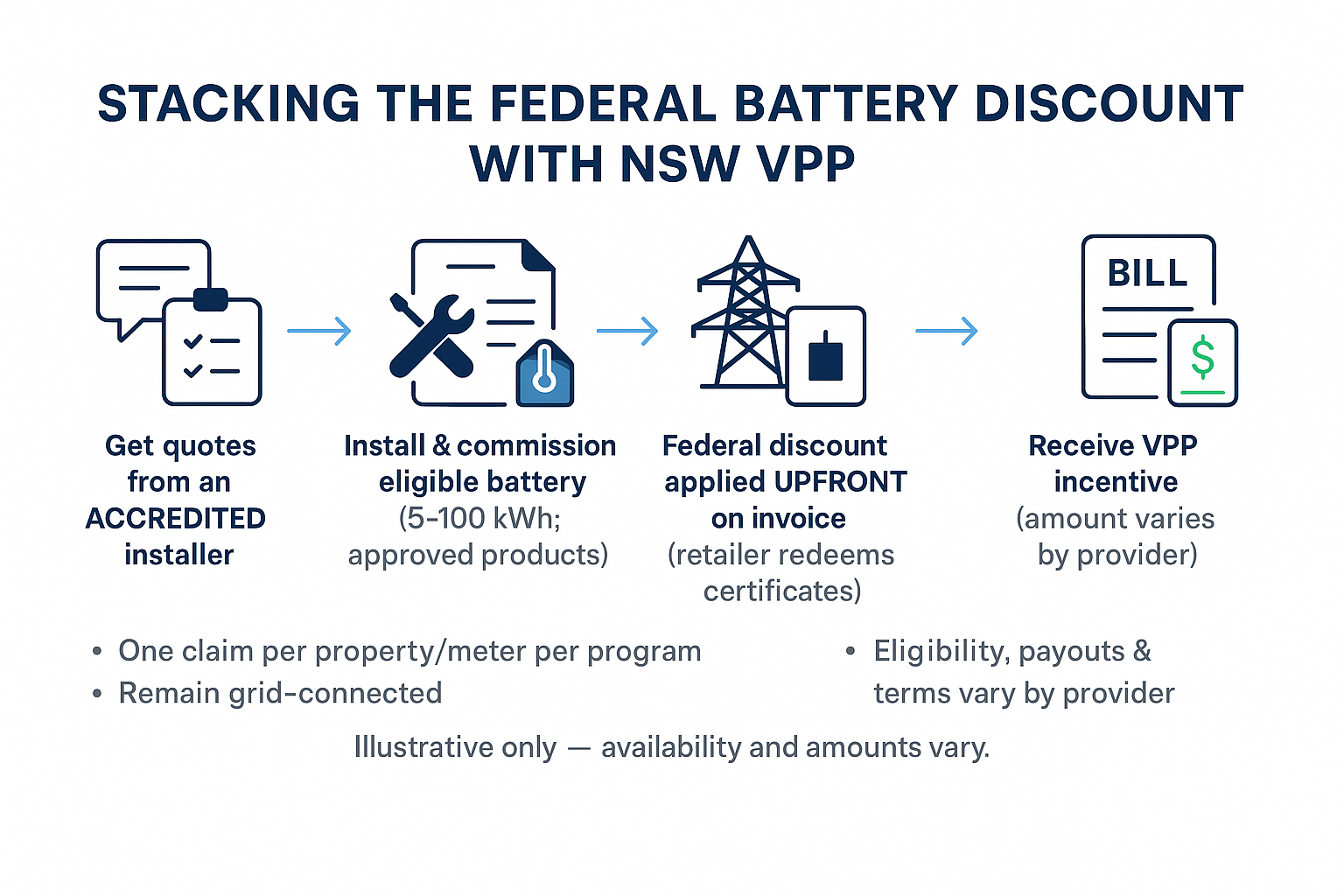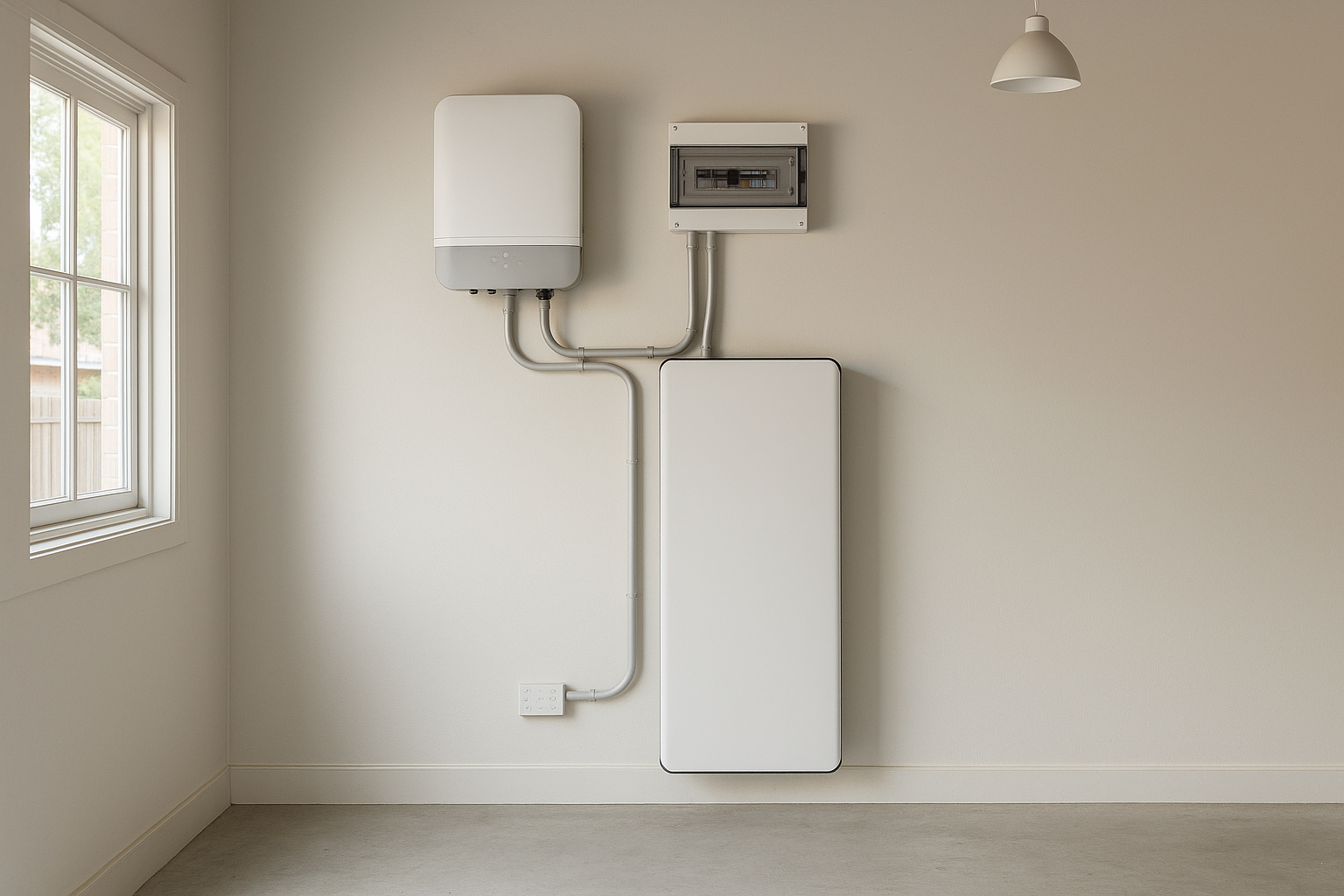Stacking savings in NSW – federal battery discount plus VPP incentive
In 2025, Sydney households are looking for practical ways to cut power bills and reduce emissions. The new Cheaper Home Batteries Program gives around a 30 per cent discount on eligible home batteries from 1 July 2025 and it can be combined with the NSW Virtual Power Plant (VPP) incentive. This means you can lower the upfront cost of a battery and earn credits for helping stabilise the grid (Energy.gov.au, 2025). Let’s explore how this stacks up and what it could mean for you.
What is a VPP
A virtual power plant is a network of home batteries, solar panels and sometimes other controllable loads that are remotely coordinated to behave like a single power station. AEMO describes a VPP as an aggregation of resources — generation, storage and controllable loads — coordinated to deliver services for power system operations and electricity markets. In practice, when you enrol your battery in a VPP, a provider can call on your stored energy during peak demand. You still use your own solar power first and can earn credits or bill reductions for allowing a share of your battery to support the grid. Many retailers and specialist VPP providers operate in NSW, and eligibility depends on your battery model, inverter and electricity retailer. Always check the contract details because availability, payout rates and minimum participation periods differ by provider.
Can you stack incentives
The federal Cheaper Home Batteries Program offers households and small businesses around a 30 per cent upfront discount on batteries installed with existing or new solar. For example, the government estimates an 11.5 kWh battery that used to cost about $13,000 could drop by roughly $4,000 under this scheme. Eligibility is broad: batteries must be between 5 kWh and 100 kWh, connected to solar and installed by an accredited installer using products on the Clean Energy Council’s approved list. Small‑scale technology certificates (STCs) are calculated on the first 50 kWh of usable capacity and installers claim the rebate on your behalf at the time of purchase.
New South Wales has added its own VPP incentive under the Peak Demand Reduction Scheme. From 1 July 2025 the payment increases to up to $1,500 for connecting an eligible battery to a VPP. The amount varies with the usable capacity of your battery and the provider’s terms. Batteries must fall between 2 kWh and 28 kWh to claim the incentive and you must remain grid‑connected. The incentive is paid by your VPP provider, either upfront or via credits, and can only be claimed once per electricity meter. Because the NSW battery installation rebate ended on 1 July 2025, you can’t claim both installation discounts. However, the federal discount and NSW VPP incentive are designed to stack: install a battery through the Cheaper Home Batteries Program and then enrol it with a VPP to receive both benefits.
Example savings
Waterloo: A compact home or apartment in “Waterloo” with existing solar adds a 10 kWh battery. An installed price of about $12,000 drops to roughly $8,500 after the federal discount. With a smaller battery the NSW VPP incentive could add around $600, bringing the net cost near $7,900. Annual power bill savings could range between $800 and $1,600 based on federal modelling, with $300–$900 attributable to the battery alone. Pairing the system with an electric vehicle using EV & solar battery storage can further increase self‑consumption and VPP credits.
Zetland: A couple in “Zetland” with evening loads opts for a 13.5 kWh battery. This size costs around $13,500 installed in 2025. The federal discount could reduce the upfront price by about $4,000, and a mid‑sized VPP incentive might be $750–$800, bringing the net cost near $8,700. Annual savings are likely $900–$1,700 depending on usage, feed‑in tariffs and the terms of the VPP contract.
In both cases, actual prices and credits vary by retailer, tariff, inverter pairing and site works. Always obtain multiple quotes and review VPP contracts.
Next steps
Request a tailored quote: Contact a battery installer accredited under the Small‑scale Renewable Energy Scheme. They will assess your roof space, usage and solar system.
Select the right size and brand: Choose a battery between 5 kWh and 100 kWh that is listed on the Clean Energy Council’s approved products and is VPP‑capable.
Confirm eligibility: Ensure your property is grid‑connected, you have or will install solar, and your installer and battery meet federal program requirements.
Installer applies the federal discount: The installer claims the STCs on your behalf and applies the discount at the point of sale.
Enrol in a VPP: Compare VPP providers and sign a contract that suits your usage. After the onboarding period you’ll receive the NSW incentive and ongoing credits.
Bright Future Energy’s services include system design, product selection and VPP advice. If you’re ready to harness solar, storage and the NSW VPP incentive, visit our EV & solar battery storage page or Contact Bright Future Energy to get started.
Your content goes here. Edit or remove this text inline or in the module Content settings. You can also style every aspect of this content in the module Design settings and even apply custom CSS to this text in the module Advanced settings.
Your content goes here. Edit or remove this text inline or in the module Content settings. You can also style every aspect of this content in the module Design settings and even apply custom CSS to this text in the module Advanced settings.


